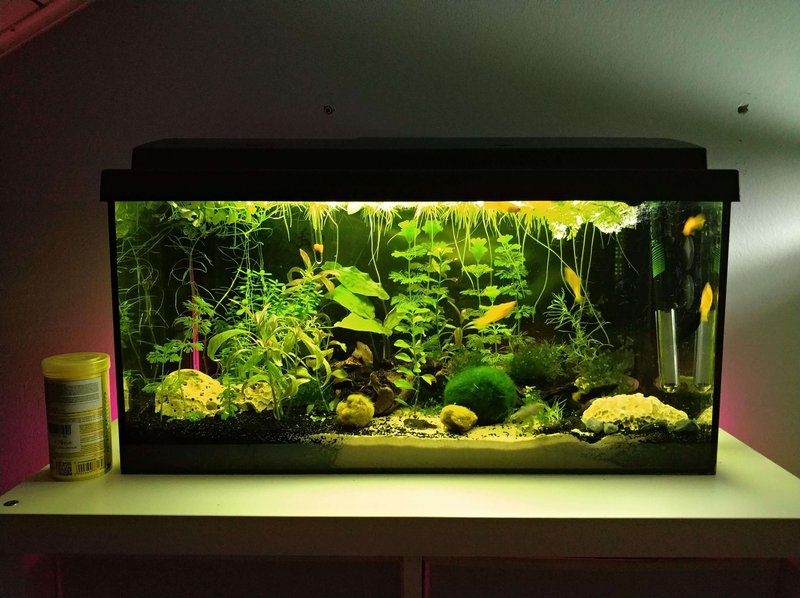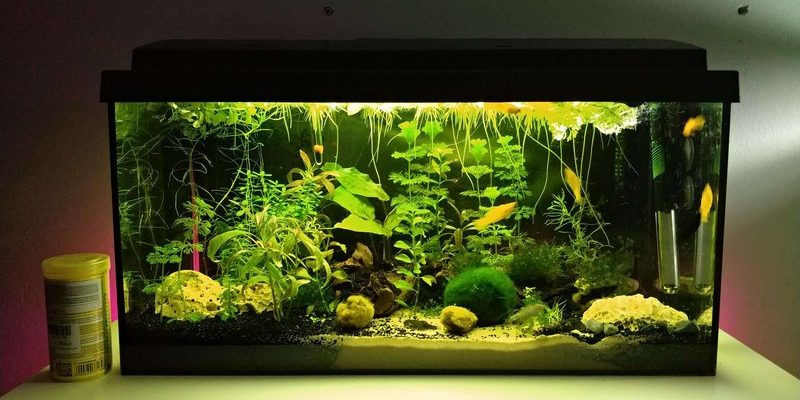
In this guide, we’ll chat about the best tank size for mollies, the water conditions they love, and how to decorate their home sweet home. By the end of this article, you’ll feel confident in creating a perfect setup that suits your fishy friends. So, let’s get started!
Understanding the Ideal Tank Size for Mollies
When it comes to tank size, mollies aren’t too picky, but they do like their space. Ideally, you want a tank that’s at least 20 gallons for a small group of these fish. Why? Because they’re social creatures and thrive when there’s a bit of room to swim around. A large tank also helps keep the water conditions stable, which is crucial for their health.
Here’s the thing: if you plan to keep a few mollies together, consider how many you want. A good rule of thumb is to add 5 gallons for each additional molly. So, if you wanted to have five mollies, you’d be looking at a minimum of 30 gallons. It’s always better to have extra space than to risk overcrowding.
Moreover, having a larger tank will make it easier for you to maintain the water quality. With more water, there’s less chance of toxins building up, which can harm your fish. Plus, it allows for some fun swimming areas and hiding spots, so your mollies can explore.
Water Conditions: What Mollies Love
Mollies are pretty adaptable when it comes to water conditions, but they thrive in slightly brackish water. Aim for a salinity level of about 1.005 to 1.010. It’s like giving them a taste of their natural habitat! They prefer a temperature range of 75°F to 82°F. It’s essential to keep the water warm but not too hot—think of it like your perfect cozy warm bath.
Another factor to consider is the pH level. Mollies do best in slightly alkaline water with a pH between 7.5 and 8.5. Testing your water is key here, so invest in a quality aquarium test kit. You might be wondering why all this matters—well, just like us, fish have their preferences. Keeping their water conditions within these ranges ensures they’ll be happier and healthier.
Don’t forget to regularly change about 10-15% of the water each week. This helps keep things fresh and removes any harmful substances that might build up over time. A good filter is your best friend—it keeps the water clean and helps maintain the right conditions.
Decorating the Molly Tank
Creating a beautiful and functional tank is where the fun really starts! When decorating a molly tank, think about hiding spots and swimming spaces. Plants—both real and artificial—are a must. They provide shelter and give the tank a natural feel. Live plants, like Java fern or Anubias, can also help with water quality.
Another great option is adding driftwood or rocks. Not only do they look fantastic, but they also offer molly fish a place to hide when they want a little privacy. Just make sure the decorations are smooth and free of sharp edges that could harm your fish.
In addition to plants and decorations, give your mollies some open swimming spaces. They love to dart around, so leaving room for them to swim freely is essential for their well-being. You can also add some floating decorations or hammocks that mimic their natural habitat.
Lighting: How Much is Enough for Your Mollies?
Lighting might seem like a minor detail, but it plays a big role in your molly’s happiness and health. Mollies prefer a moderate light level. Too much light can stress them out, while too little can affect any plants and décor you have in the tank.
Aim for around 10-12 hours of light daily. A timer can be helpful here! It takes away the guesswork and ensures a consistent day-night cycle for your mollies. You might even want to consider using LED lights, as they’re energy-efficient and can create a nice ambiance in your tank.
Lastly, if you have live plants, check if they require specific light conditions. It’s like choosing the right lamp for your reading nook at home—different plants have different needs.
Water Filtration: Keeping Things Clean
Water quality is paramount for any fish, and mollies are no exception. A high-quality filter is essential for maintaining a healthy tank. It helps remove waste, uneaten food, and toxins from the water, keeping it clean and safe for your mollies.
When choosing a filter, look for one with a good flow rate. Mollies like a bit of current, but too much can be stressful. You can also consider a sponge filter if you have fry or baby mollies. These filters are gentle and won’t suck little fish in.
Make sure to regularly clean your filter according to the manufacturer’s instructions. Even the best filters need some TLC! A clogged filter won’t do its job properly, potentially leading to poor water quality.
Common Mistakes to Avoid
Setting up a tank for mollies can be exciting, but it’s easy to make a few mistakes along the way. Here are some common pitfalls to watch out for:
- Overcrowding: It’s tempting to get more fish than your tank can handle. Stick to the guidelines we discussed earlier.
- Ignoring Water Conditions: Regularly check your water parameters. Fish can be sensitive to sudden changes, so keep things stable.
- Neglecting Maintenance: It’s not just about setting up the tank; you need to maintain it regularly. Regular water changes and filter cleaning are crucial.
By avoiding these common mistakes, you’ll create a thriving environment for your mollies. Remember, a little attention goes a long way in keeping your pet fish happy.
Building the ideal setup for your mollies is a rewarding process. It’s all about creating a space that makes them feel safe and at home. From choosing the right tank size and water conditions to decorating with plants and hiding spots, every detail matters.
Once everything is in place, you’ll find joy in watching your mollies swim and socialize. They’ll bring life to your space and, honestly, a bit of happiness to your day. Enjoy the journey of building your molly home, and always remember that happy fish make for a thriving aquarium!

